Overview: Equities were mostly higher in the Asia Pacific region, though Chinese and Hong Kong markets eased, and South Korea and India were closed for national holidays. Despite new Chinese exercises off the coast of Taiwan following another US congressional visit, Taiwan’s Taiex gained almost 0.85%. Europe’s Stoxx 600 is advancing for the fourth consecutive session, while US futures are paring the pre-weekend rally. Following disappointing data and a surprise cut in the one-year medium-term lending facility, China’s 10-year yield fell to 2.66%, its lowest in two years. The US 10-year is soft near 2.83%, while European yields are mostly 2-4 bp lower. Italian bonds are bucking the trend and the 10-year yield is a little higher. The Antipodeans and Norwegian krone are off more than 1%, but all the major currencies are weaker against the greenback, but the Japanese yen, which is practically flat. Most emerging market currencies are lower too. The Hong Kong Dollar, which has been supported by the HKMA, strengthened before the weekend, and is consolidating those gains today. Gold tested the $1800 level against but has been sold in the wake of the stronger dollar and is at a five-day low near $1778. The poor data from China raises questions about demand, and September WTI is off 3.6% after falling 2.4% before the weekend. It is near $88.60, while last week’s five-month lows were set near $87.00. US natgas is almost 2% lower, while Europe’s benchmark is up 2.7% to easily recoup the slippage of the past two sessions. China’s disappointment is weighing on industrial metal prices. Iron ore tumbled 4% and September copper is off nearly 3%. September wheat snapped a four-day advance before the weekend and is off 2.3% today.
Asia Pacific
With a set of disappointing of data, China surprised with a 10-bp reduction in the benchmark one-year lending facility rate to 2.75%. It is the first cut since January. It also cut the yield on the seven-day repo rate to 2.0% from 2.1%. The string of poor news began before the weekend with a larger-than-expect in July lending figures. However, those lending figures probably need to be put in the context of the surge seen in June as lenders scramble to meet quota. Today's July data was simply weak. Industrial output and retail sales slowed sequentially year-over-year, whereas economists had projected modest increases. New home prices eased by 0.11%, and residential property sales fell 31.4% year-over-year after 31.8% decline in June. Property investment fell 6.4% year-over-year, year-to-date measures following a 5.4% drop in June. Fix asset investment also slowed. The one exception to the string of disappointment was small slippage in the surveyed unemployment rate to 5.4% from 5.5%. Incongruous, though on the other hand, the jobless rate for 16–24-year-olds rose to a record 19.9%.
Japan reported a Q2 GDP that missed estimates, but the revisions lifted Q1 GDP out of contraction. The world's second-largest economy grew by 2.2% at an annualized pace in Q2. While this was a bit disappointing, Q1 was revised from a 0.5% fall in output to a 0.1% expansion. Consumption (1.1%) rebounded (Q1 revised to 0.3% from 0.1%) as did business spending (1.4% vs. -0.3% in Q1, which was originally reported as -0.7%). Net exports were flat after taking 0.5% off Q1 GDP. Inventories, as expected, were unwound. After contributing 0.5% to Q1 GDP, they took 0.4% off Q2 growth. Deflationary forces were ironically still evident. The GDP deflator fell 0.4% year-over-year, almost the same as in Q1 (-0.5%). Separately, Japan reported industrial surged by 9.2% in June, up from the preliminary estimate of 8.9%. It follows a two-month slide (-7.5% in May and -1.5% in April) that seemed to reflect the delayed impact of the lockdowns in China.
The US dollar is little changed against the Japanese yen and is trading within the pre-weekend range (~JPY132.90-JPY133.90). It finished last week slightly above JPY133.40 and a higher closer today would be the third gain in a row, the longest advance in over a month. The weakness of Chinese data seemed to take a toll on the Australian dollar, which has been sold to three-day lows in the European morning near $0.7045. It stalled last week near $0.7140 and in front of the 200-day moving average (~$0.7150). A break of $0.7035 could signal a return to $0.7000, and possibly $0.6970. The greenback gapped higher against the Chinese yuan and reached almost CNY6.7690, nearly a two-week high. The pre-weekend high was about CNY6.7465 and today's low is around CNY6.7495. The PBOC set the dollar's reference rate at CNY6.7410, a little above the Bloomberg survey median of CNY6.7399. Note that a new US congressional delegation is visiting Taiwan and China has renewed drills around the island. The Taiwan dollar softened a little and traded at a three-day low.
Europe
Turkey's sovereign debt rating was cut a notch by Moody's to B3 from B2. That is equivalent to B-, a step below Fitch (B) and two below S&P (B+). Moody's did change its outlook to stable from negative. The rating agency cited the deterioration of the current account, which it now sees around 6% of GDP, three times larger than projected before Russia invaded Ukraine. The Turkish lira is the worst performing currency this year, with a 27.5% decline after last year's 45% depreciation. Turkey's two-year yield fell below 20% today for the first time in nine months, helped ostensibly by Russia's recent cash transfer. The dollar is firm against the lira, bumping against TRY17.97.
The water level at an important junction on the Rhine River has fallen below the key 30-centimeter threshold (~12 inches) and could remain low through most of the week, according to reports of the latest German government estimate. Separately, Germany announced that its gas storage facility is 75% full, two weeks ahead of plan. The next target is 85% by October 1 and 95% on November 1. Reports from France show its nuclear reactors were operating at 48% of capacity, down from 50% before the weekend. A couple of reactors were shut down for scheduled maintenance on Saturday.
Ahead of Norway' rate decision on Thursday, the government reported a record trade surplus last month. The NOK229 bln (~$23.8 bln). The volume of natural gas exports surged more than four-times from a year earlier. Mainland exports, led by fish and electricity, rose by more than 20%. The value of Norway's electricity exports increased three-fold from a year ago. With rising price pressures (headline CPI rose to 6.8% in July and the underlying rate stands at 4.5%) and strong demand, the central bank is expected to hike the deposit rate by 50 bp to 1.75%.
The euro stalled near $1.0370 last week after the softer than expected US CPI. It was pushed through the lows set that day in the European morning to trade below $1.02 for the first time since last Tuesday. There appears to be little support ahead of $1.0160. However, the retreat has extended the intraday momentum indicators. The $1.0220 area may now offer initial resistance. Sterling peaked last week near $1.2275 and eased for the past two sessions before breaking down to $1.2050 today. The intraday momentum indicators are stretched here too. The $1.2100 area may offer a sufficient cap on a bounce. A break of $1.20 could confirm a double top that would project back to the lows.
America
The Congressional Budget Office estimates that the Inflation Reduction Act reduces the budget deficit but will have a negligible effect on inflation. Yet, starting with the ISM gauge of prices paid for services, followed by the CPI, PPI, and import/export prices, the last string of data points came in consistently softer than expected. In addition, anecdotal reports suggest the Big Box stores are cutting prices to reduce inventories. Energy is important for the medium-term trajectory of measured inflation, but the core rate will prove sticky unless shelter cost increases begin to slow.
While the Democrats scored two legislative victories with the approval of the Chips and Science Act and the Inflation Reduction Act, the impact on the poll ahead of the November midterm election seems minor at best. Even before the search-and-seizure of documents still in former President Trump's residence, PredictIt.Org "wagers" had turned to favor the Democratic Party holding the Senate but losing the House of Representatives. In terms of the Republican nomination for 2024, it has been back-and-forth over the last few months, and recently Florida Governor DeSantis narrowly pulled ahead of Trump.
The two new laws may face international pushback aside from the domestic impact. The EU warned last week that the domestic content requirement to earn subsidies for electric vehicles appears to discriminate against European producers. The Inflation Reduction Act offers $7500 for the purchases of electric cars if the battery is built in North America or if the minerals are mined or recycled there. The EU electric vehicle subsidies are available for domestic and foreign producers alike. On the other hand, the Chips and Science Act offers billions of dollars to attract chip production and design to the US. However, it requires that companies drawing the subsidies could help upgrade China's capacity for a decade. Japan and Taiwan will likely go along. It fits into their domestic political agenda. However, South Korea may be a different kettle of fish. Hong Kong and China together accounted for around 60% of South Korea's chip exports last year. Samsung has one overseas memory chip facility. It is in China and produces about 40% of the Galaxy phones' NAND flash output. Pelosi's apparent farewell trip to Asia, including Taiwan, was not well received in South Korea. President Yoon Suk Yeol did not interrupt his staycation in Seoul to meet the US Speaker. Nor was the foreign minister sent. This is not to cast aspersions on South Korea's commitment to regional security, simply that it is not without limits.
Today's economic calendar features the August Empire State manufacturing survey. A small decline is expected. The June TIC data is out as the markets close today. Today is also the anniversary of the US ending Bretton Woods by severing the last links between gold and the dollar in 1971. Canada reports manufacturing sales and wholesale trade, but the most market-sensitive data point may be the existing home sales, which are expected to have declined for the fifth consecutive month. Canada reports July CPI tomorrow (Bloomberg survey median forecast sees headline CPI slowing to 7.6% from 8.1% in June).
The Canadian dollar is under pressure. The US dollar has jumped above CAD1.2900 in Europe after finishing last week near CAD1.2780. Last week's high was set near CAD1.2950, where a $655 mln option is set to expire today. A move above CAD1.2920 could target CAD1.2975-CAD1.3000 over the next day or day. A combination of weaker equities, thin markets, and a short-term market leaning the wrong way after the likely drivers today. The greenback posted its lowest close in two months against the Mexican peso before the weekend near MXN19.85. However, it is rebounding today and testing the MXN20.00 area Initial resistance may be encountered around MXN20.05, but we are looking for a move toward MXN20.20 in the coming days. Mexico's economic calendar is light this week, and the highlight is the June retail sales report at the end of the week.




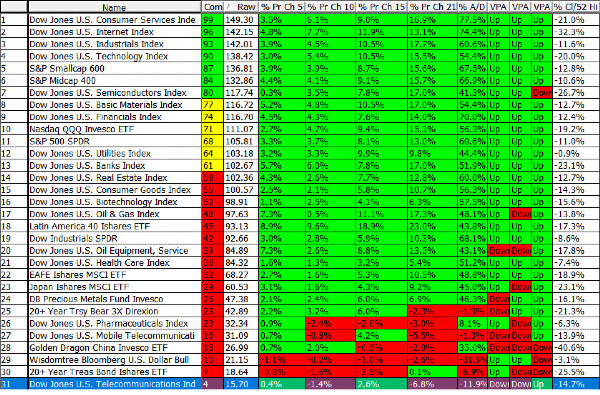





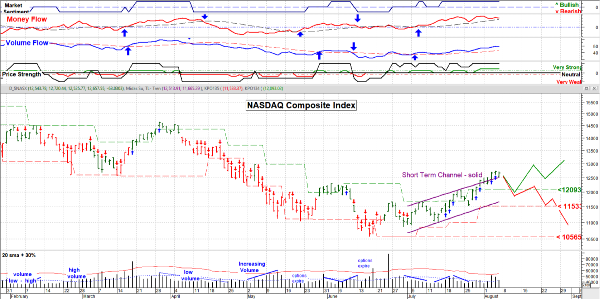





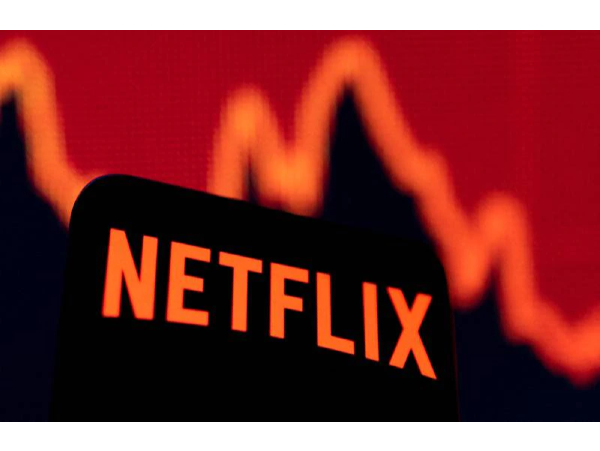

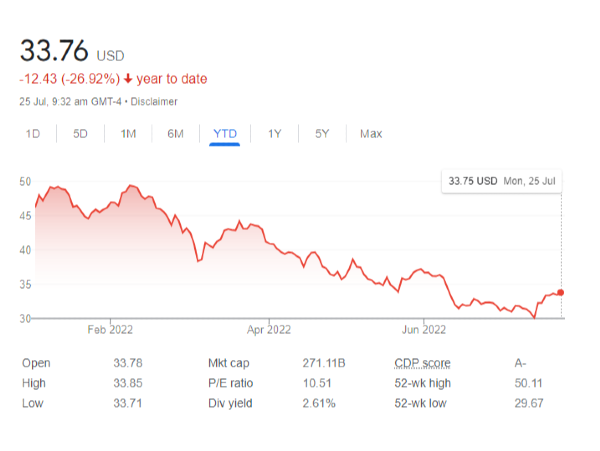

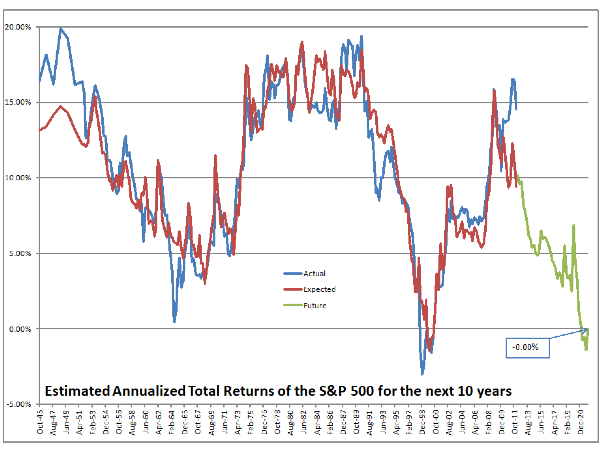









Overview: Equities were mostly higher in the Asia Pacific region, though Chinese and Hong Kong markets eased, and South Korea and India were closed for national holidays. Despite new Chinese exercises off the coast of Taiwan following another US congressional visit, Taiwan’s Taiex gained almost 0.85%. Europe’s Stoxx 600 is advancing for the fourth consecutive session, while US futures are paring the pre-weekend rally. Following disappointing data and a surprise cut in the one-year medium-term lending facility, China’s 10-year yield fell to 2.66%, its lowest in two years. The US 10-year is soft near 2.83%, while European yields are mostly 2-4 bp lower. Italian bonds are bucking the trend and the 10-year yield is a little higher. The Antipodeans and Norwegian krone are off more than 1%, but all the major currencies are weaker against the greenback, but the Japanese yen, which is practically flat. Most emerging market currencies are lower too. The Hong Kong Dollar, which has been supported by the HKMA, strengthened before the weekend, and is consolidating those gains today. Gold tested the $1800 level against but has been sold in the wake of the stronger dollar and is at a five-day low near $1778. The poor data from China raises questions about demand, and September WTI is off 3.6% after falling 2.4% before the weekend. It is near $88.60, while last week’s five-month lows were set near $87.00. US natgas is almost 2% lower, while Europe’s benchmark is up 2.7% to easily recoup the slippage of the past two sessions. China’s disappointment is weighing on industrial metal prices. Iron ore tumbled 4% and September copper is off nearly 3%. September wheat snapped a four-day advance before the weekend and is off 2.3% today.
Asia Pacific
With a set of disappointing of data, China surprised with a 10-bp reduction in the benchmark one-year lending facility rate to 2.75%. It is the first cut since January. It also cut the yield on the seven-day repo rate to 2.0% from 2.1%. The string of poor news began before the weekend with a larger-than-expect in July lending figures. However, those lending figures probably need to be put in the context of the surge seen in June as lenders scramble to meet quota. Today's July data was simply weak. Industrial output and retail sales slowed sequentially year-over-year, whereas economists had projected modest increases. New home prices eased by 0.11%, and residential property sales fell 31.4% year-over-year after 31.8% decline in June. Property investment fell 6.4% year-over-year, year-to-date measures following a 5.4% drop in June. Fix asset investment also slowed. The one exception to the string of disappointment was small slippage in the surveyed unemployment rate to 5.4% from 5.5%. Incongruous, though on the other hand, the jobless rate for 16–24-year-olds rose to a record 19.9%.
Japan reported a Q2 GDP that missed estimates, but the revisions lifted Q1 GDP out of contraction. The world's second-largest economy grew by 2.2% at an annualized pace in Q2. While this was a bit disappointing, Q1 was revised from a 0.5% fall in output to a 0.1% expansion. Consumption (1.1%) rebounded (Q1 revised to 0.3% from 0.1%) as did business spending (1.4% vs. -0.3% in Q1, which was originally reported as -0.7%). Net exports were flat after taking 0.5% off Q1 GDP. Inventories, as expected, were unwound. After contributing 0.5% to Q1 GDP, they took 0.4% off Q2 growth. Deflationary forces were ironically still evident. The GDP deflator fell 0.4% year-over-year, almost the same as in Q1 (-0.5%). Separately, Japan reported industrial surged by 9.2% in June, up from the preliminary estimate of 8.9%. It follows a two-month slide (-7.5% in May and -1.5% in April) that seemed to reflect the delayed impact of the lockdowns in China.
The US dollar is little changed against the Japanese yen and is trading within the pre-weekend range (~JPY132.90-JPY133.90). It finished last week slightly above JPY133.40 and a higher closer today would be the third gain in a row, the longest advance in over a month. The weakness of Chinese data seemed to take a toll on the Australian dollar, which has been sold to three-day lows in the European morning near $0.7045. It stalled last week near $0.7140 and in front of the 200-day moving average (~$0.7150). A break of $0.7035 could signal a return to $0.7000, and possibly $0.6970. The greenback gapped higher against the Chinese yuan and reached almost CNY6.7690, nearly a two-week high. The pre-weekend high was about CNY6.7465 and today's low is around CNY6.7495. The PBOC set the dollar's reference rate at CNY6.7410, a little above the Bloomberg survey median of CNY6.7399. Note that a new US congressional delegation is visiting Taiwan and China has renewed drills around the island. The Taiwan dollar softened a little and traded at a three-day low.
Europe
Turkey's sovereign debt rating was cut a notch by Moody's to B3 from B2. That is equivalent to B-, a step below Fitch (B) and two below S&P (B+). Moody's did change its outlook to stable from negative. The rating agency cited the deterioration of the current account, which it now sees around 6% of GDP, three times larger than projected before Russia invaded Ukraine. The Turkish lira is the worst performing currency this year, with a 27.5% decline after last year's 45% depreciation. Turkey's two-year yield fell below 20% today for the first time in nine months, helped ostensibly by Russia's recent cash transfer. The dollar is firm against the lira, bumping against TRY17.97.
The water level at an important junction on the Rhine River has fallen below the key 30-centimeter threshold (~12 inches) and could remain low through most of the week, according to reports of the latest German government estimate. Separately, Germany announced that its gas storage facility is 75% full, two weeks ahead of plan. The next target is 85% by October 1 and 95% on November 1. Reports from France show its nuclear reactors were operating at 48% of capacity, down from 50% before the weekend. A couple of reactors were shut down for scheduled maintenance on Saturday.
Ahead of Norway' rate decision on Thursday, the government reported a record trade surplus last month. The NOK229 bln (~$23.8 bln). The volume of natural gas exports surged more than four-times from a year earlier. Mainland exports, led by fish and electricity, rose by more than 20%. The value of Norway's electricity exports increased three-fold from a year ago. With rising price pressures (headline CPI rose to 6.8% in July and the underlying rate stands at 4.5%) and strong demand, the central bank is expected to hike the deposit rate by 50 bp to 1.75%.
The euro stalled near $1.0370 last week after the softer than expected US CPI. It was pushed through the lows set that day in the European morning to trade below $1.02 for the first time since last Tuesday. There appears to be little support ahead of $1.0160. However, the retreat has extended the intraday momentum indicators. The $1.0220 area may now offer initial resistance. Sterling peaked last week near $1.2275 and eased for the past two sessions before breaking down to $1.2050 today. The intraday momentum indicators are stretched here too. The $1.2100 area may offer a sufficient cap on a bounce. A break of $1.20 could confirm a double top that would project back to the lows.
America
The Congressional Budget Office estimates that the Inflation Reduction Act reduces the budget deficit but will have a negligible effect on inflation. Yet, starting with the ISM gauge of prices paid for services, followed by the CPI, PPI, and import/export prices, the last string of data points came in consistently softer than expected. In addition, anecdotal reports suggest the Big Box stores are cutting prices to reduce inventories. Energy is important for the medium-term trajectory of measured inflation, but the core rate will prove sticky unless shelter cost increases begin to slow.
While the Democrats scored two legislative victories with the approval of the Chips and Science Act and the Inflation Reduction Act, the impact on the poll ahead of the November midterm election seems minor at best. Even before the search-and-seizure of documents still in former President Trump's residence, PredictIt.Org "wagers" had turned to favor the Democratic Party holding the Senate but losing the House of Representatives. In terms of the Republican nomination for 2024, it has been back-and-forth over the last few months, and recently Florida Governor DeSantis narrowly pulled ahead of Trump.
The two new laws may face international pushback aside from the domestic impact. The EU warned last week that the domestic content requirement to earn subsidies for electric vehicles appears to discriminate against European producers. The Inflation Reduction Act offers $7500 for the purchases of electric cars if the battery is built in North America or if the minerals are mined or recycled there. The EU electric vehicle subsidies are available for domestic and foreign producers alike. On the other hand, the Chips and Science Act offers billions of dollars to attract chip production and design to the US. However, it requires that companies drawing the subsidies could help upgrade China's capacity for a decade. Japan and Taiwan will likely go along. It fits into their domestic political agenda. However, South Korea may be a different kettle of fish. Hong Kong and China together accounted for around 60% of South Korea's chip exports last year. Samsung has one overseas memory chip facility. It is in China and produces about 40% of the Galaxy phones' NAND flash output. Pelosi's apparent farewell trip to Asia, including Taiwan, was not well received in South Korea. President Yoon Suk Yeol did not interrupt his staycation in Seoul to meet the US Speaker. Nor was the foreign minister sent. This is not to cast aspersions on South Korea's commitment to regional security, simply that it is not without limits.
Today's economic calendar features the August Empire State manufacturing survey. A small decline is expected. The June TIC data is out as the markets close today. Today is also the anniversary of the US ending Bretton Woods by severing the last links between gold and the dollar in 1971. Canada reports manufacturing sales and wholesale trade, but the most market-sensitive data point may be the existing home sales, which are expected to have declined for the fifth consecutive month. Canada reports July CPI tomorrow (Bloomberg survey median forecast sees headline CPI slowing to 7.6% from 8.1% in June).
The Canadian dollar is under pressure. The US dollar has jumped above CAD1.2900 in Europe after finishing last week near CAD1.2780. Last week's high was set near CAD1.2950, where a $655 mln option is set to expire today. A move above CAD1.2920 could target CAD1.2975-CAD1.3000 over the next day or day. A combination of weaker equities, thin markets, and a short-term market leaning the wrong way after the likely drivers today. The greenback posted its lowest close in two months against the Mexican peso before the weekend near MXN19.85. However, it is rebounding today and testing the MXN20.00 area Initial resistance may be encountered around MXN20.05, but we are looking for a move toward MXN20.20 in the coming days. Mexico's economic calendar is light this week, and the highlight is the June retail sales report at the end of the week.
Originally Posted on marctomarket.com